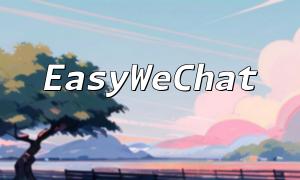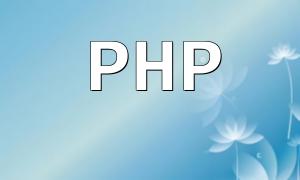With the popularity of WeChat Mini Programs, more developers are looking to add multi-language support to their apps. This article will guide you on how to implement this feature using EasyWeChat and PHP, helping you better meet the needs of users from different language backgrounds.
EasyWeChat is a PHP-based WeChat development toolkit designed to simplify the development process. It provides convenient APIs that help developers quickly integrate features like WeChat Mini Programs, public accounts, payments, and more. Using EasyWeChat, developers can easily manage users, send messages, handle payments, and more.
To enable multi-language support in WeChat Mini Programs, we need to follow these steps:
First, you need to prepare the text content for each language. These language files are usually in JSON or array format. Here are examples of two language files:
Chinese Language File (zh-CN.json):
{
"hello": "你好",
"welcome": "欢迎"
}
English Language File (en-US.json):
{
"hello": "Hello",
"welcome": "Welcome"
}
In EasyWeChat’s configuration file, you need to add the language support configuration. Here’s an example:
'languages' => [ 'zh-CN' => '简体中文', 'en-US' => 'English' ]
In your WeChat Mini Program, you can retrieve the user's language setting using the following code:
wx.getSystemInfo({
success: function(res) {
var language = res.language; // User’s language setting, e.g., zh_CN
}
})
Then, you can pass this language value to your server, which will select the appropriate language file based on the user's setting and return it to the Mini Program.
In the Mini Program, you can display text content based on the current language setting. Here’s a code example:
wx.request({
url: 'xxx',
success: function(res) {
// Set text content according to the returned language file
var helloText = res.data.hello;
var welcomeText = res.data.welcome;
// Display text content
// ...
}
})
With this approach, the Mini Program will display the appropriate text based on the user’s language preference.
This article covered how to implement multi-language support in WeChat Mini Programs using EasyWeChat and PHP. By managing and processing text content for different languages, you can ensure your WeChat Mini Program meets the needs of users from different regions. I hope this guide helps you achieve better results in your WeChat Mini Program development!
WeChat Mini Program Language Setting:
wx.getSystemInfo({
success: function(res) {
var language = res.language; // User's language setting, e.g., zh_CN
}
})
PHP Server API:
<?php
$language = $_GET['language']; // Retrieve language setting
// Return the appropriate language file based on the setting
if ($language == 'zh_CN') {
echo file_get_contents('zh-CN.json');
} elseif ($language == 'en_US') {
echo file_get_contents('en-US.json');
} else {
echo file_get_contents('default.json');
}
?>
In this code example, we retrieve the language setting passed by the Mini Program using $_GET['language'], and then return the corresponding language file. You can modify and optimize this code based on your actual needs.
I hope the above content helps you successfully implement multi-language support in your WeChat Mini Program!










